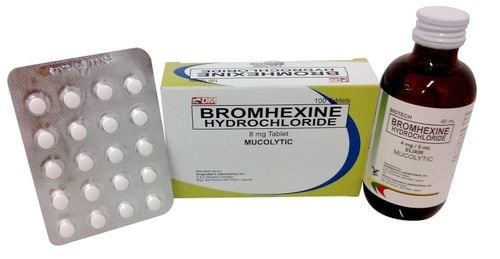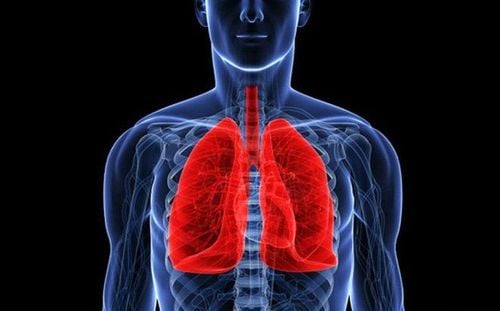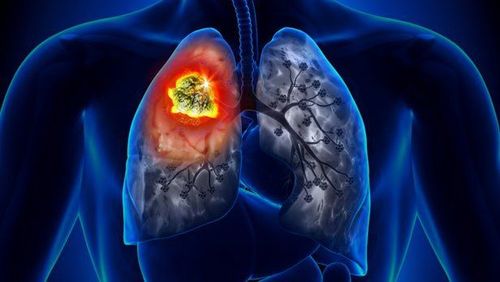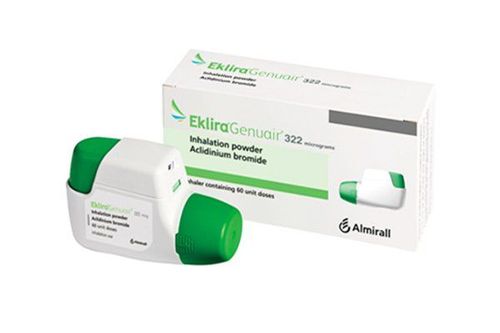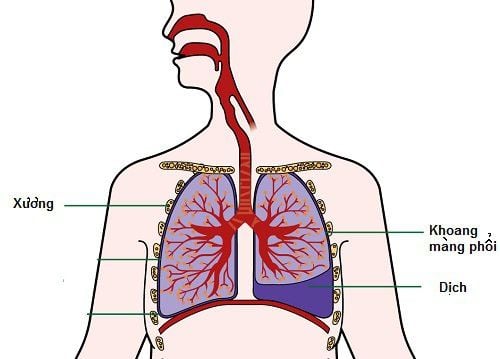This is an automatically translated article.
Article by Master, Doctor Nguyen Ngoc Bach - Department of General Internal Medicine - Vinmec Times City International Hospital
Part 2 will continue to discuss the treatment methods for people with COPD such as: Prevention of infections, breathing difficulties, nutrition and some other measures. The information will help patients understand when doctors prescribe and prescribe, help patients comply and increase treatment effectiveness.
1. Methods of treating chronic obstructive pulmonary disease
Chronic obstructive pulmonary disease (COPD) is a condition in which the airways in the lungs become inflamed and narrow and the gas exchange units of the lungs, the alveoli, are damaged (emphysema). Smoking is the most common cause of COPD. In part 1, we learned about the Treatment Methods for Chronic Obstructive Pulmonary Disease :
Quit Smoking Learn and understand the methods of using inhaled drugs, topical sprays Practice pulmonary rehabilitation Adhere to the examination Period In part 2 will continue to discuss the treatment methods for people with COPD such as: Prevention of infections, breathing difficulties, nutrition and some other measures. The information will help patients understand when doctors prescribe and prescribe, help patients comply and increase treatment effectiveness.

Tránh xa thuốc có lợi cho việc điều trị bệnh phổi tắc nghẽn mãn tính
2. Infection prevention and treatment
Having a respiratory infection can lead to exacerbations of COPD. Vaccination is an important part of treatment to prevent exacerbations of COPD. The vaccines include:
Pneumococcal vaccine : This vaccine helps prevent one of the most common causes of pneumonia; There are two vaccines (called Pneumovax and Prevnar). Specific vaccination recommendations depend on your age and other factors. Your doctors will help decide if you need both vaccines or just Pneumovax, and when you should get it (the vaccine may need to be repeated after an interval of 5 to 10 years. ). Flu vaccine : You should get a flu shot every year before flu season (usually in the fall or early winter in the northern hemisphere) Pertussis vaccine : This vaccine protects against whooping cough. Whooping cough has become increasingly common in adults, despite the fact that most people were vaccinated during childhood. This is because immunity to whooping cough decreases over time. Adults 19 years and older should be vaccinated against whooping cough every 10 years. Doctors will ask more about the following factors: health care workers or close contacts of children under one year of age (eg grandparents, child care workers) to advise you. When you have signs of a more serious illness: Difficulty breathing, more cough, fever... your doctors may prescribe medicine. Depending on the infection or viral infection, you will be prescribed antibiotics to treat bacterial infections or antiviral drugs in case of flu. Patients should not self-medicate during exacerbations of chronic obstructive pulmonary disease. It is important to see a doctor for a reasonable and effective prescription.
3. Nutritional problems
Some people with COPD have a respiratory condition that affects their meals, the daily energy supply through food is not enough, so they often appear to lose weight. Chronic malnutrition leads to malnutrition, which can make symptoms worse and increase the chance of infection. This is an important issue, so when a patient with chronic obstructive pulmonary disease has weight loss, they should talk to their doctor for advice, if necessary, the patient will be sent to a nutritionist. To support treatment
Some ways to help you get more energy through meals, you can:
Eat small, frequent meals with nutrient-dense foods (such as eggs) meals that require little preparation (e.g. mini-meals) Rest before meals Take a daily multivitamin Add nutritional supplements (drinks or bars are high in calories and nutrients) Take prescription drugs to stimulate your appetite on the other hand, if you are overweight, this can also make your COPD symptoms worse and your risk of co-morbidities . Your doctor can advise you on a healthy weight, and they can also screen and detect conditions other than chronic obstructive pulmonary disease early.
Uống vitamin giúp tăng thêm năng lượng cho cơ thể
4. Some other treatments
As mentioned above, there are things that everyone with COPD should do to manage their disease; Quitting smoking (if you smoke) is most important. In addition, there are other non-drug treatments that can help relieve symptoms and improve quality of life.
4.1 Oxygen therapy
People with severe or advanced COPD may have low blood oxygen levels. This condition, called hypoxia, can happen even if you don't feel short of breath or have other symptoms. Oxygen levels can be measured with a device placed on the finger (pulse oximetry) or with a blood test (arterial blood gas). People with hypoxia can be treated with oxygen, which can improve survival and quality of life. When you breathe oxygen at home, the medical staff will provide and insert a small tube from the oxygen tank through the humidification system into your nostrils and guide you to the oxygen flow to adjust. They'll also show you how to use your devices in accordance with your doctor's orders, and how (and when) to clean and replace them. When using oxygen therapy should never be used while smoking. Oxygen is explosive, and smoking while using oxygen can lead to severe burns. Serious fires have occurred in people who tried to smoke while using oxygen. Some people with COPD may be prone to hypoxia during air travel because of changes in air pressure inside the plane. Before you travel you should see your doctor to determine that you are at risk of hypoxia during flight, and that oxygen may be prescribed for use during flight.
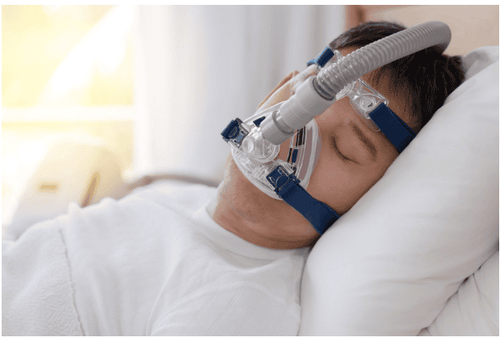
Oxy liệu pháp được sử dụng để điều trị bệnh
4.2 Endotracheal valve
Endotracheal valves (EBVs) are small devices that are implanted into small bronchial passages using a bronchoscope (a tube that is inserted through your mouth or nose and down your throat). The valves allow air to escape from the area where the alveoli are congested, which puts pressure on the adjacent lung sections, because there is a one-way valve if air cannot re-enter. As a result, the normal alveoli of the lungs that are not affected can ensure normal function. EBV may be an option for people who continue to have symptoms of emphysema despite medication and pulmonary rehabilitation.
4.3 Surgery
For chronic obstructive pulmonary disease there are a number of surgical indications, such as lung volume reduction surgery or lung transplantation, which may be helpful in reducing symptoms in some people with advanced emphysema.
Lung volume reduction surgery involves removing the most damaged areas of the lung, allowing the remaining lung to expand and function more normally. This may be an option for people with severe symptoms after trying all other conventional therapies, including pulmonary rehabilitation. Not everyone will benefit from this surgery, and some people may actually get worse. A healthcare provider may recommend imaging tests, such as a CT scan, to help determine if the procedure is likely to be beneficial. Lung transplantation may be considered in cases of severe COPD. If successful, the transplant has the potential to improve symptoms. However, lung transplantation has not yet been shown to prolong the lives of people with COPD. Vinmec International General Hospital with a system of modern facilities, medical equipment and a team of experts and doctors with many years of experience in medical examination and treatment, patients can rest assured to visit. and hospital treatment.
To register for examination and treatment at Vinmec International General Hospital, you can contact Vinmec Health System nationwide, or register online HERE.
MORE
Symptoms and treatment of chronic obstructive pulmonary disease Tests to help detect chronic obstructive pulmonary disease Breathing guide in chronic obstructive pulmonary disease





